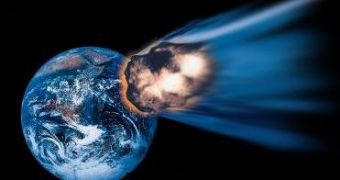An asteroid dubbed 2013 RZ53 is set to pass by our planet this coming Wednesday, September 18. Scientists have mapped its trajectory and say that the space rock is to journey between our planet and the moon.
By the looks of it, the asteroid will not come any closer than 148,000 miles (230,800 kilometers) to Earth. Specialists say it will reach this distance from our planet at 6:20 p.m. EDT (22:20 GMT).
By comparison, the moon's orbit sits at some 239,000 miles (384,600 kilometers) away from our planet. This means that 2013 RZ53 will not hit any of them, researchers explain.
Space informs us that this asteroid was discovered only last week, on September 13, by scientists working with the University of Arizona's Mount Lemmon Survey.
These specialists are presently collaborating with NASA as part of a program dubbed the Catalina Sky Survey. The purpose of this program is to closely monitor the sky and pin down any asteroid or other celestial bodies that might constitute a threat to our planet.
Preliminary measurements indicate that the newly discovered space rock measures some 3-10 feet (1-3 meters) from one side to the other. Otherwise put, it is fairly small.
This means that, even if its trajectory were to take it straight towards Earth, it would burn and disintegrate in our planet's atmosphere long before it would have the chance to cause any damage.
The same source tells us that 2013 RZ53 belongs to a group of near-Earth asteroids known to the scientific community as the Apollo family.
It is from this family that researchers suspect the meteor that hit Russia's Chelyabinsk region earlier this year broke away. That space rock measured about 56 – 66 feet (17 – 20 meters) in length, and it caused quite a commotion when it exploded in our planet's atmosphere back in February.

 14 DAY TRIAL //
14 DAY TRIAL //